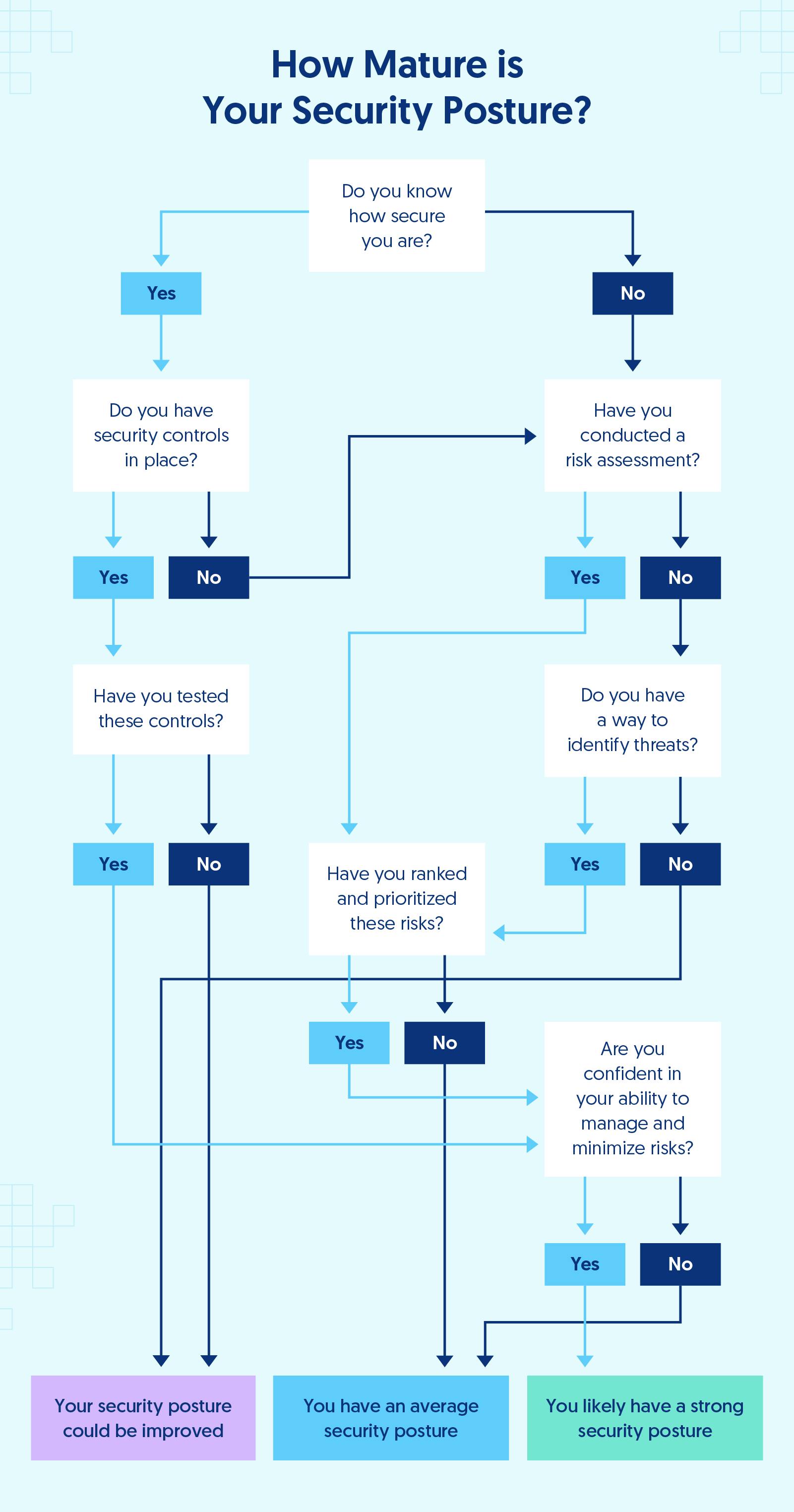Cybersecurity is an especially delicate thing to balance in the remote world. Well over half of IT and security professionals agree that managing data security has become more difficult over the past two years. Cybersecurity isn’t as simple as changing your password regularly or using your own hot spot in public, though they’re certainly pieces of the puzzle.
The puzzle itself, however, is your company’s security posture. Security posture is the overall measure of your business’s security status. It factors in password hygiene, data protection measures, network and cloud security, vendor risk management, and data breach protocols — just to name a few more pieces.
Your business’s security posture is one of the backbones that determines your company’s success. Even if an e-commerce site generated o ver $1 million in revenue, a single data breach could deplete those funds in fines and class action lawsuits — not to mention all the future profits to miss out on if customers’ trust is lost. In fact, IBM has found that the average data breach costs more than $3 million.
But while security posture is a measure of your various security processes, there aren’t metrics to meet or a to-do list to check off. So how do you actually know where your company stands?
It all starts with taking a step back and evaluating both the big picture and its individual details. It’s important to understand potential risks, how your business’s current processes play a role in preventing them, and what to do in the event of a cybersecurity breach.
If this sounds like a lot to keep in mind, don’t worry. Let’s walk through a few questions you can ask yourself to get a pulse on your business’s security posture.
Do We Know How Secure We Are?
If this doesn’t feel like a foreign language to you and you’re well versed in your company’s security controls, you’re in great shape already. This likely means you have security measures in place that are appropriately scaled for your business needs.
It’s okay if these measures aren’t ironclad or if you’re not sure where to even start. The number one goal is to prevent any sort of breaches to your security, right? This means that understanding risks your business faces is a great first step.
Pro tip: A risk matrix, which lists potential security risks against their business impact, can be a helpful method for staying organized.
Do We Have a Way to Identify Threats?
Without sheer luck, preventing data breaches is difficult if you don’t anticipate them to begin with.
Here is where your IT or network security teams shine. They monitor your company’s infrastructure all day every day, and they should know when something is amiss.
Pro tip: First take stock of where and how data is stored. Is certain data locked behind employee access? Where on the cloud does sensitive data live? From there, you can brainstorm ways that these access points could be potentially vulnerable.
Have We Tested Our Security Controls?
One surefire way to measure your business’s security posture is to actively test security controls.
Security audits, along with “penetration testing” — which is attempting to penetrate security measures as if you were a hacker — can highlight the security of, well, your security.
Test things like passwords and cloud access, but don’t forget about the less obvious security measures, like procedures for granting or revoking access to sensitive data for certain employees or monitoring what employees share on social media.
Most importantly, be sure to regularly conduct such testing as your business and the tech landscape at large continue to evolve.
Pro tip: Use the testing stages to inform your company’s incident response plan, which is a comprehensive procedure for reacting to a data breach. Document responsibilities and instructions for different roles in your company in the face of a cyber attack.
Are We Confident in Our Risk Management?
As we’ve mentioned, security posture isn’t a checklist item; it’s a sum of all its parts, and it will constantly need reviewing.
This means that how confident you are at risk anticipation and mitigation are likely to change as well. Take a “gut check” on your confidence level often, and proactively think of ways your company’s risk management can continue to improve.
Keeping security posture top of mind will ensure that it remains strong for days and years to come.
Pro tip: Keep your employees confident with security practices as well with regular engaging training.
Maintaining a strong security posture will keep your business — and your peace of mind — afloat. We hope these questions have gotten you off to a good start in measuring yours. For even more inspiration, check out this flowchart, courtesy of Secureframe.
About the Author
A graduate of the University of Texas at Austin, Maggie Douglas is a copy editor living in Orlando, Fla. She is passionate about supporting writers in producing polished work and elevating the inclusivity and sensitivity of content. When not reading or watching Jeopardy!, you can usually find her at Disney World.











